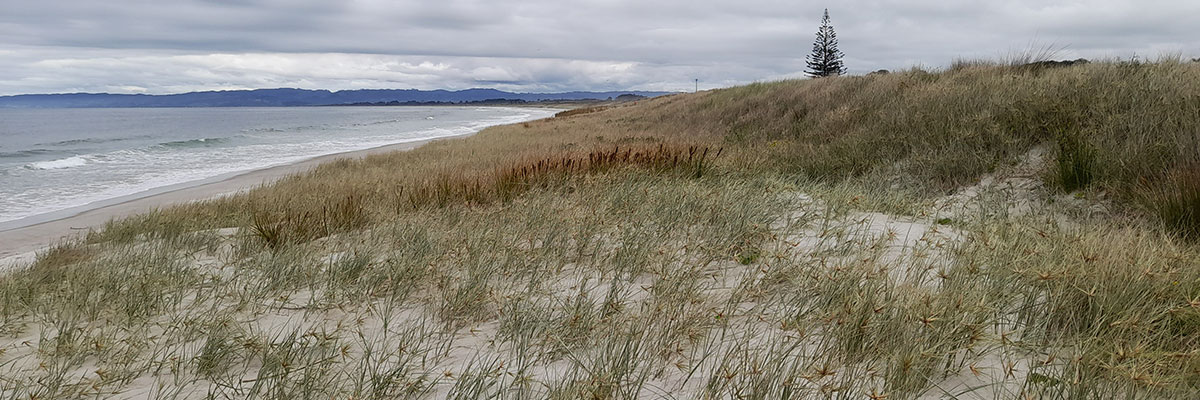Story
CoastCare winter dune planting
We all love a visit to the beach in summer and with no part of Northland being more than 40km from the coast it’s no surprise that our sand dunes come under pressure, experiencing damage from vehicles, weeds and animal pests.
It’s easy to take sand dunes for granted but they do in fact have many important values. They’re home to specialised native plants and wildlife, they help protect land and infrastructure from coastal erosion; they often contain important cultural sites and they help maintain a healthy beach.
 Pingao on a Ruakākā dune.
Pingao on a Ruakākā dune.
For over 15 years CoastCare Te Taitokerau has helped communities to protect and restore their sand dunes through education, management of access, weed and pest control and by replanting them with eco-sourced native sand-binding plants. This vital work has helped to retain the natural character of the coast, whilst enhancing biodiversity
There are more than thirty CoastCare groups in Te Taitokerau, working throughout the year to protect their sand dunes and coastal environment. In winter the focus is on planting, including site preparation such as weed removal, fencing and pest control. This planting season an amazing total of over 17,400 dune plants have been planted, at 20 sites around the region. These plants are grown from seed collected by CoastCare volunteers and staff, propagated in a specialised nursery and returned to the area from which they were collected.
There are two key native species on our foredunes. Spinifex (also known as tihetihe or kowhangatara) and pīngao. Both are sand-binders, helping to trap wind-blown sand while still allowing some sand movement which is vital for a healthy dune. Pīngao is a culturally significant plant to Māori and is considered a Taonga (a treasure) due to its importance to Māori weavers. Pīngao is a threatened plant, being classified as at-risk declining, so any harvesting should be done thoughtfully and sustainably.
Laura Shaft, CoastCare Co-ordinator, Northland Regional Council, commented;
“As we move into summer the focus of many CoastCare groups shifts towards protecting the wildlife that call our beaches home. In particular, the Northern NZ dotterel (tūturiwhatu), variable oystercatcher (tōrea) and NZ fairy tern (tara iti) who breed and raise their chicks on the beach during the busy summer months. These ground nesting birds are very vulnerable to disturbance and death from beach users and their dogs and vehicles. Groups all around our coast help to give these threatened species the best chance of survival by fencing around nest area, putting up signs and talking to beach users.”
So, as we hit the beach this summer, let’s appreciate the dedication of the hundreds of volunteers who give their time and energy to conserving our coasts. You can contribute too, by making conscious choices to help protect our coastline and the vulnerable species that call it home - using the accessways provided, keeping out of fenced areas, and keeping vehicles and dogs off the dunes.
If you want to get involved in a CoastCare group looking after your local beach, you can find further information at: www.nrc.govt.nz/coastcaregroups or contact [email protected]

Spinifex and pingao on Ruakākā dune.

